Abstract
Root nodules were harvested from chamber-grown soybean (Glycine max L. Merrill cv Woodworth) plants throughout development. Apparent nitrogenase activity (acetylene reduction) peaked before seeds began to develop, but a significant amount of activity remained as the seeds matured. Nodule senescence was defined as the period in which residual nitrogenase activity was lost. During this time, soluble protein and leghemoglobin levels in the host cell cytosol decreased, and proteolytic activity against azocasein increased. Degradative changes were not detected in bacteroids during nodule senescence. Total soluble bacteroid protein per gram of nodule remained constant, and an increase in proteolytic activity in bacteroid extracts was not observed. These results are consistent with the view that soybean nodule bacteroids are capable of redifferentiation into free-living bacteria upon deterioration of the legume-rhizobia symbiosis.
Full text
PDF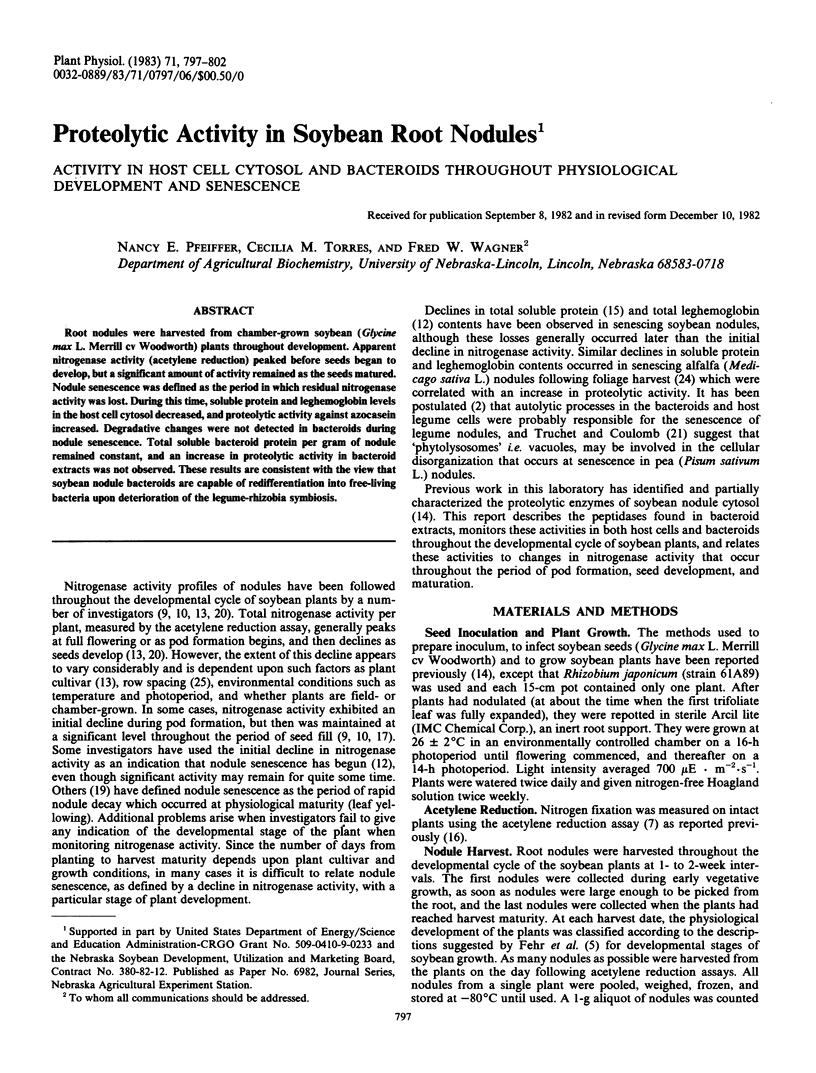
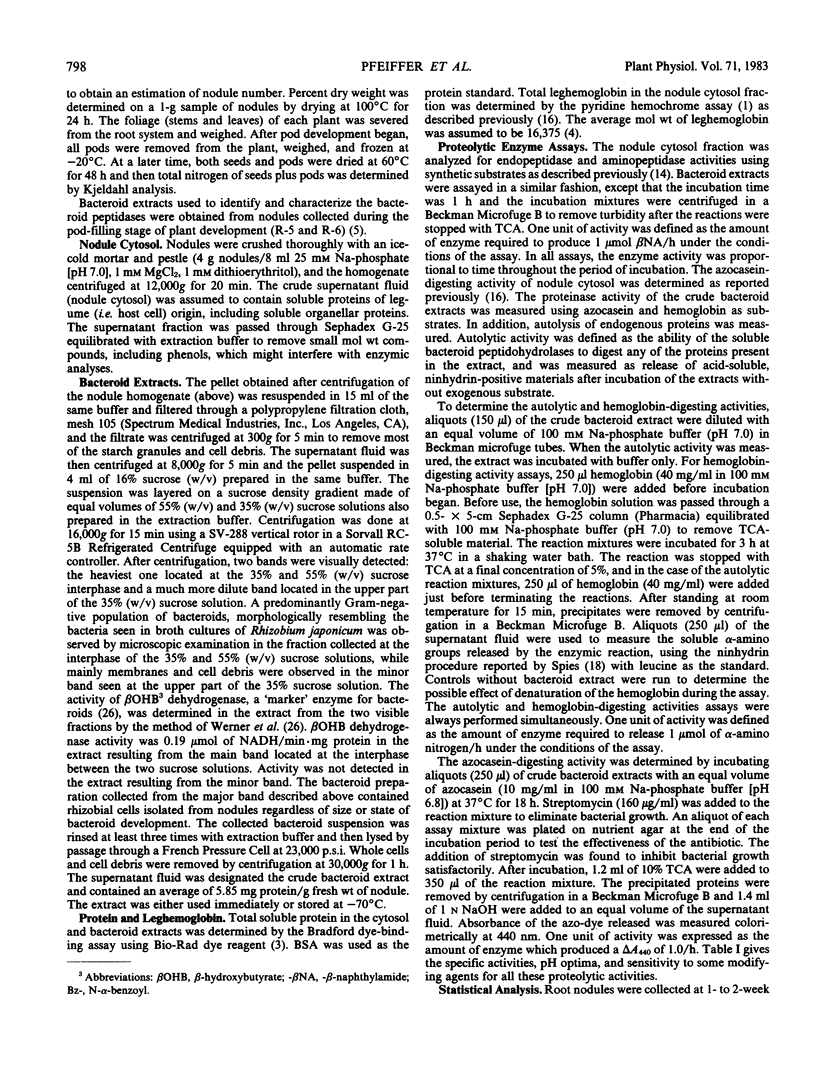
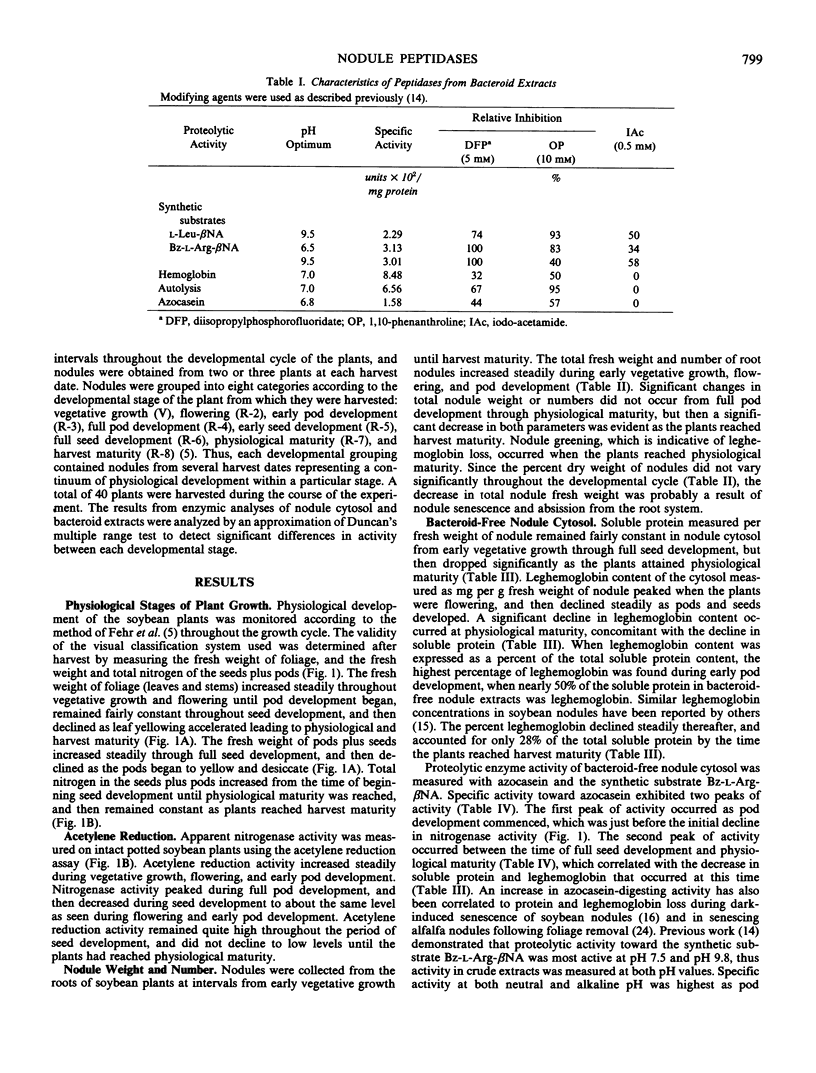
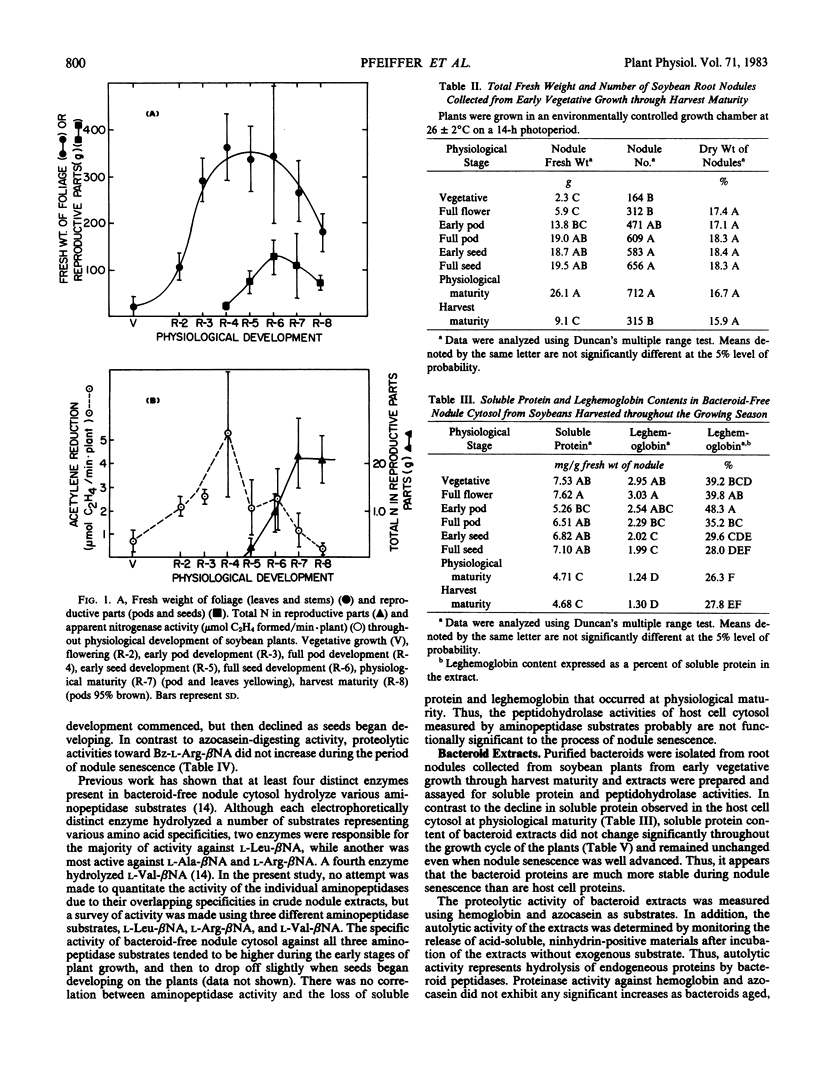

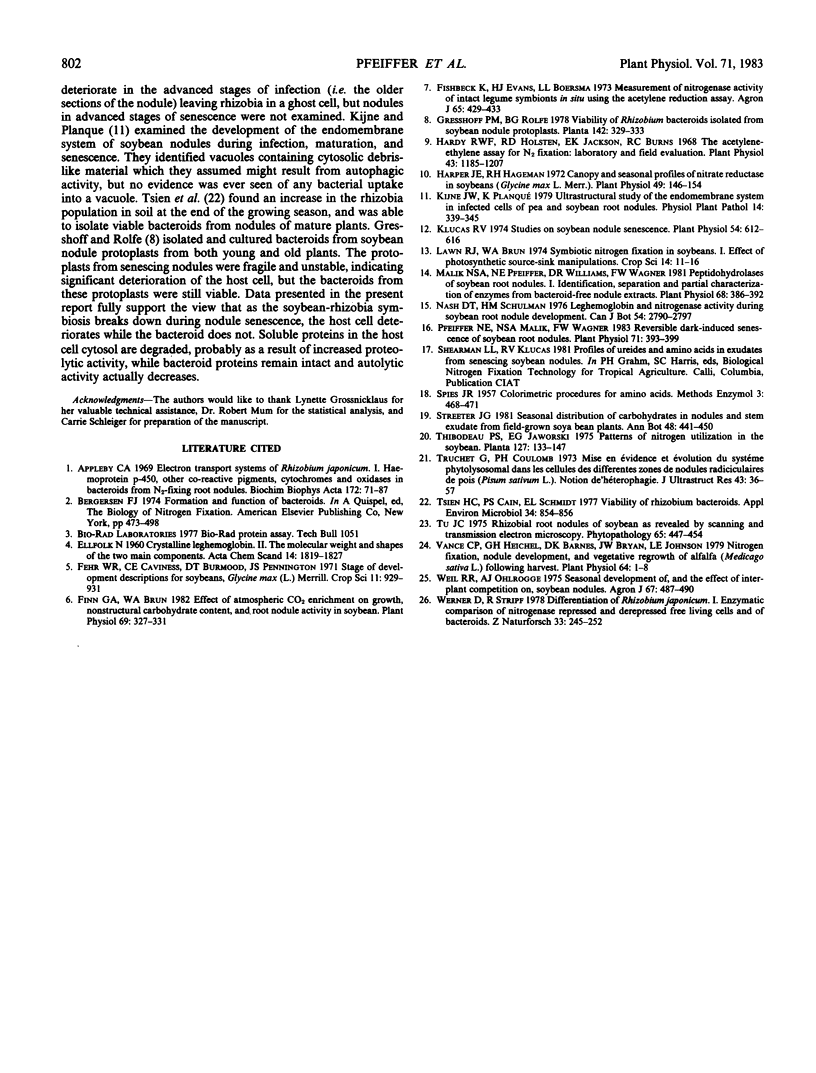
Selected References
These references are in PubMed. This may not be the complete list of references from this article.
- Appleby C. A. Electron transport systems of Rhizobium japonicum. I. Haemoprotein P-450, other CO-reactive pigments, cytochromes and oxidases in bacteroids from N2-fixing root nodules. Biochim Biophys Acta. 1969 Jan 14;172(1):71–87. doi: 10.1016/0005-2728(69)90093-0. [DOI] [PubMed] [Google Scholar]
- Finn G. A., Brun W. A. Effect of Atmospheric CO(2) Enrichment on Growth, Nonstructural Carbohydrate Content, and Root Nodule Activity in Soybean. Plant Physiol. 1982 Feb;69(2):327–331. doi: 10.1104/pp.69.2.327. [DOI] [PMC free article] [PubMed] [Google Scholar]
- Hardy R. W., Holsten R. D., Jackson E. K., Burns R. C. The acetylene-ethylene assay for n(2) fixation: laboratory and field evaluation. Plant Physiol. 1968 Aug;43(8):1185–1207. doi: 10.1104/pp.43.8.1185. [DOI] [PMC free article] [PubMed] [Google Scholar]
- Harper J. E. Canopy and Seasonal Profiles of Nitrate Reductase in Soybeans (Glycine max L. Merr.). Plant Physiol. 1972 Feb;49(2):146–154. doi: 10.1104/pp.49.2.146. [DOI] [PMC free article] [PubMed] [Google Scholar]
- Klucas R. V. Studies on soybean nodule senescence. Plant Physiol. 1974 Oct;54(4):612–616. doi: 10.1104/pp.54.4.612. [DOI] [PMC free article] [PubMed] [Google Scholar]
- Malik N. S., Pfeiffer N. E., Williams D. R., Wagner F. W. Peptidohydrolases of Soybean Root Nodules : IDENTIFICATION, SEPARATION, AND PARTIAL CHARACTERIZATION OF ENZYMES FROM BACTEROID-FREE EXTRACTS. Plant Physiol. 1981 Aug;68(2):386–392. doi: 10.1104/pp.68.2.386. [DOI] [PMC free article] [PubMed] [Google Scholar]
- Pfeiffer N. E., Malik N. S., Wagner F. W. Reversible dark-induced senescence of soybean root nodules. Plant Physiol. 1983 Feb;71(2):393–399. doi: 10.1104/pp.71.2.393. [DOI] [PMC free article] [PubMed] [Google Scholar]
- Truchet G., Coulomb P. Mise en évidence et évolution du système phytolysosomal dans les cellules des différentes zones de nodules radiculaires de pois (Pisum sativum L. J Ultrastruct Res. 1973 Apr;43(1):36–57. [PubMed] [Google Scholar]
- Tsien H. C., Cain P. S., Schmidt E. L. Viability of Rhizobium bacteroids. Appl Environ Microbiol. 1977 Dec;34(6):854–856. doi: 10.1128/aem.34.6.854-856.1977. [DOI] [PMC free article] [PubMed] [Google Scholar]
- Werner D., Stripf R. Differentiation of Rhizobium japonicum, I. enzymatic comparison of nitrogenase repressed and derepressed free living cells and of bacteroids. Z Naturforsch C. 1978 Mar-Apr;33(3-4):245–252. doi: 10.1515/znc-1978-3-413. [DOI] [PubMed] [Google Scholar]


